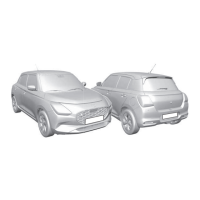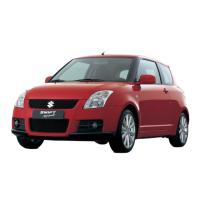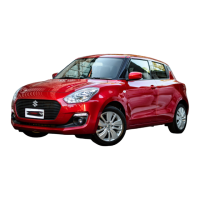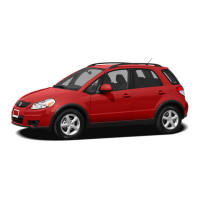2-3
FOR SAFE DRIVING
69TB-01E
59RN02400
59RN02380
as low as possible
across the hips
WARNING
• Never allow persons to ride in the
cargo area of a vehicle. In the event
of an accident, there is a much
greater risk of injury for persons who
are not riding in a seat with their seat
belt securely fastened.
• Seat belts should always be adjusted
as follows:
– the lap portion of the belt should
be worn low across the pelvis, not
across the waist.
– the shoulder straps should be
worn on the outside shoulder only,
and never under the arm.
– the shoulder straps should be
away from your face and neck, but
not falling off your shoulder.
• Seat belts should never be worn with
the straps twisted and should be
adjusted as tightly as is comfortable
to provide the protection for which
they have been designed. A slack
belt will provide less protection than
a snug belt.
• Check that seat belt latch plate
(tongue) is inserted into the proper
buckle especially in the rear seats. It
is not possible to insert into the
wrong buckles in the rear seats.
(Continued)
WARNING
(Continued)
•Pregnant
women should use seat
belts, although specific recommen-
dations about driving should be
made by the woman’s medical advi-
sor. Remember that the lap portion of
the belt should be worn as low as
possible across the hips, as shown in
the illustration.
•
Do not fasten your seat belt over
hard or breakable objects in your
pockets or on your clothing. If an
accident occurs, objects such as
glasses, pens, etc. under the seat
belt can caus
e injury.
59RN020060
• Do not hold a child on a passenger's
lap. Even if the passenger holds the
child tightly, he/she would not be
supported enough in the event of an
accident and it could result in a seri-
ous injury of the child.
(Continued)

